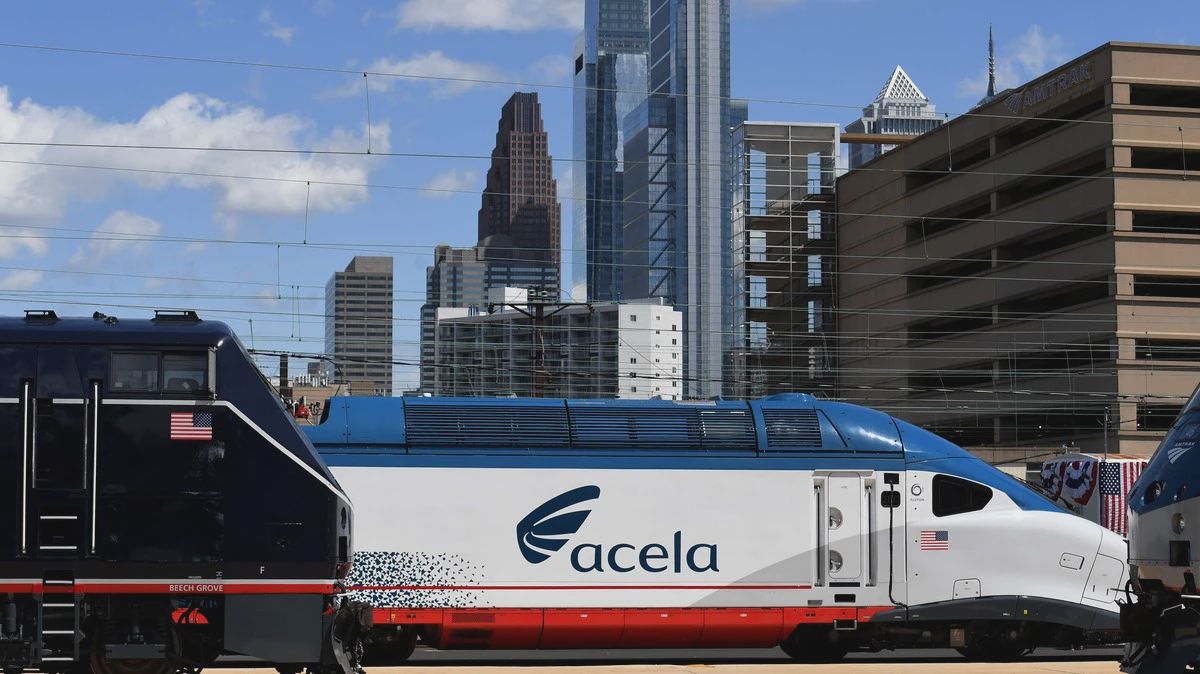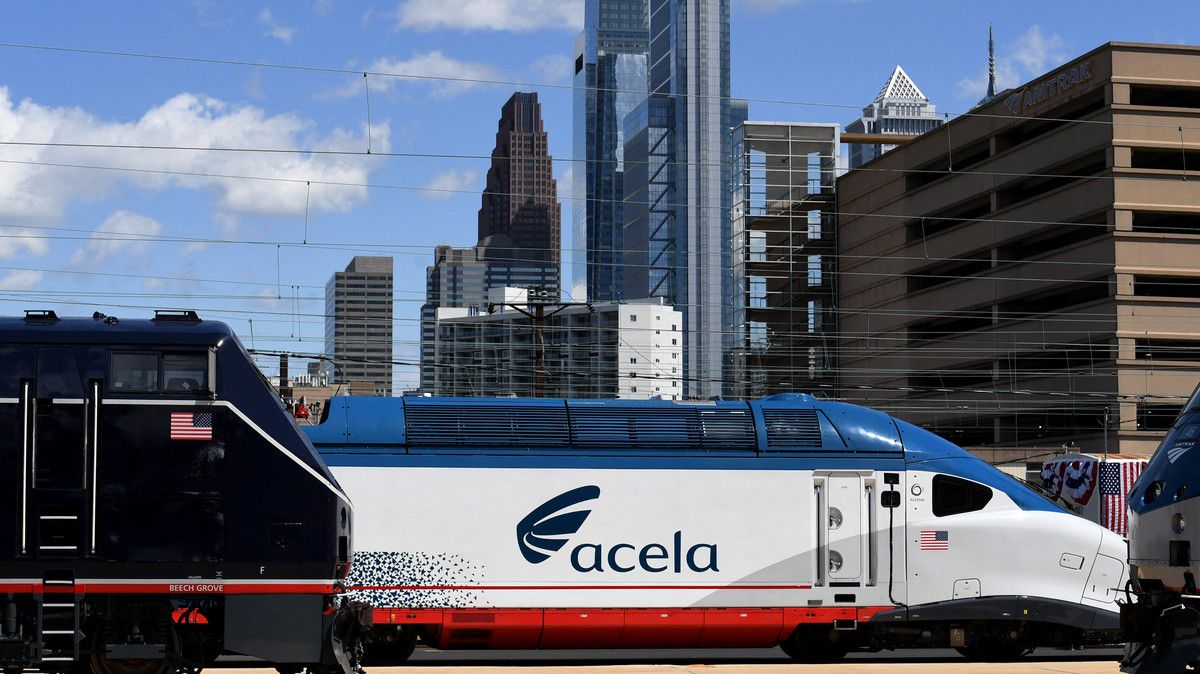from tree@lemmy.zip to technology@lemmy.ml on 05 Oct 2023 08:26
https://lemmy.zip/post/3687865
The flagship Acela fleet may have to cut service because Amtrak is running out of spare parts and using unsupported software on critical components while the new fleet is nowhere close to entering service.
A scathing new report paints a bleak picture of Amtrak’s highly profitable Acela route: trains are running out of spare parts, the new fleet is years delayed and not even close to entering service, and the current fleet is being maintained by harvesting the corpses of old trains and running unsupported software on old circuit boards made by companies that no longer exist.
The report, released this week by the Amtrak Office of Inspector General, indicates that Amtrak may have to run less service on the Acela route from Washington D.C. to Boston via New York… It calls into question the agency’s ability to buy new trains while keeping to a schedule, even as it is in the midst of its most expensive train orders in history to replace a huge swath of the existing fleet thanks to an injection of funds from the 2021 Bipartisan Infrastructure Act.
In 2016, Amtrak bought 28 new train sets from Alstom to replace the current Acela fleet, which is now 25 years old. The train order, which cost $2.5 billion in total (including upgraded rail yards and maintenance facilities) and have a larger capacity than the current fleet and can go 10 mph faster, were supposed to enter service starting in 2021. That never happened.
According to the Amtrak OIG report, Alsom has made 12 of the train sets as well as 22 of the 28 café cars, but they all have defects, including windows that shatter “spontaneously.” But the report notes it is common for new train sets to have defects.
Alstom spokesperson Clifford Cole said in a statement, “We are surprised with the so-called ‘defects’ that the OIG report identifies” and added that the “modifications” Amtrak has requested “are in no way in the critical path of completion of this project.”
The bigger problem that is causing the years of delay has to do with the way new trains are tested before entering service. The new Acela fleet uses a tilt-technology familiar to anyone who has ridden high-speed rail in Europe or Asia that allows the trains to round bends at more extreme angles. Because this is the first fleet to use that technology in the U.S., the Federal Railroad Administration has stringent testing requirements to ensure it is safe. This includes the use of advanced computer modeling before running the trains on the tracks.
According to the Amtrak OIG report, the computer model is the source of the hold-up. Alstom built most of the trains before the model was ready and the FRA still has not approved it. The most recent model submitted to the FRA in July, the 14th attempt, was in some ways worse than previous models, according to the report. Until the FRA validates the model, the trains cannot move forward with real-world testing, much less be put into service.
The report is critical of Amtrak and Alstom for allowing the trains to be built before the model was complete, as well as for not allowing Department of Transportation officials to view the model’s source code to help Alstom get it into shape. Alstom has declined to do so citing trade secrets, according to the report.
Cole, the Alstom spokesperson, said the company is “the world leader in high-speed trains” with 2,300 such trains in service with Alstom parts and technology. Cole said the company is working closely with Amtrak to get them into service. Cole disputed that it is unusual to build trains before the validation of the testing model.
The Amtrak OIG paints a dim picture of Acela service in the coming years. Amtrak’s latest announcement said the new trains would enter service in 2024, but the report implies that is unlikely (the subtitle of the report includes the phrase “Additional Delays and Cost Increases are Likely”). In an addendum to the report, Amtrak management said it agreed with the report’s findings and recommendations.
Moreover, the current Acela fleet is being maintained with spare parts harvested from old trains. Some of the companies that made parts that go into the current fleet no longer exist. The software used to run the train control system on the current Acela fleet is from the mid-1990s and the circuit board that runs the software was made by a company that no longer exists. Delays and trip unreliability are likely to increase as these fleets are duct-taped together while the new, untested fleet sits in the Philadelphia station rail yard.
link: vice.com/…/a-computer-model-is-causing-years-of-d…


threaded - newest
That is the problem. Using proprietary software that can't even be reviewed outside of blackbox testing in the government's contract process lets terrible software companies who won lowest bidder contracts is a recipe for disaster.
All government contracts should include the ability to review the code if they don't just require it to be open source. The company can do a lot of business supporting their software without needing to keep it secret, and if secrecy from the government is vital to their business plan then they should stay out of the public sector.
Exactly this seems like a matter of the train set manufacturer going to war against the regulator, with the operator and the public stuck in the lurch.
While it is a shame the new trains are delayed, it’s very informative and unfortunate to discover their most profitable train line is using hardware from the 90s… that they can barely keep running… because the manufacturer went out of business.
There should be some deal in place for these manufacturers to transfer essential documentation to customers in the instance that they collapse IMO, like schematics for electronics, source code for hardware etc.
Personally I would be very uncomfortable as a director, knowing that the only cash cow is literally in the hands of thankless engineers doing the impossible with technology that is three decades old, with no documentation… and if anything goes wrong there’s no fallback plan apart from chopping up the old trains for more parts
Why not just have the transfer of that happen when they sign the contract? I don’t see why the government having schematics is an issue, if they provide a good service, the government won’t ever need to go elsewhere for service.
First of all, 10mph faster is not high-speed. The entire header is full of BS. It’s not some model causing delays, the trains are simply not ready.
Second, just order some trains from Europe. We know how to build them.
Sounds like they did that.
No, not really.
Alstom has been building manufacturing facilities in America specifically for this project, (and other projects popping up across the US, making it a financially viable endeavor) however there are lots of urbanist communities on the net that explain this arrangement in much more detail.
The trains are very much of a European design, just most of the materials are sourced in the US and they’re manufactured in the US.
There is one truly domestic passenger train manufacturer in the US (sorry, can’t recall their name), and AFAIK they were not chosen because they don’t have both the experience or available capacity to make what Amtrak are after
Edit: also should mention some of the new trains have been parked in Amtrak’s yards for several years now, fully assembled. Occasionally you’ll hear a peep about them being used for testing but that’s it
So it would actually be more expensive to put those trains on a ship and bring them to US than to build all the manufacturing facilities? Interesting. I guess it’s because they were planning on building more trains? Because setting all this up for 23 trains sounds crazy.
I remember when about 20 years ago they were about to close train factory in Poland and there was a lot of protesting. In the end government ordered so basic passenger trains from then and saved the factory. It’s still running to this day. Looks like his Amtrak story is a good example why it’s important to have this capacity in house. Once you loose it you’re fucked.
Amtrak is a US-government owned corporation and is probably subject to buy-american rules. However, those rules relate to where things are made, not the nationality of the contracting company. Also the company can play plenty of games with the definition of sub-component quantity and how these percentages are determined.
There are not any (US) American passenger railset manufacturers left. The main one operating in North America is Bombardier in Canada. But they’ve been producing horrible trains and screwing customers for decades. In the 2000s China Rail Road Corporation (CRRC) moved into the US market and started beating Bombardier on trainset bids left and right, due to price but also due to the fact that Bombardier has been a really horrible vendor.
But CRRC hasn’t been much better, and also there’s now a lot of questions about working with a Chinese state-run company even if the assembly happens in the US. So the USA is still a ripe market for a vendor to conquer by just producing a reliable product at a reasonable price. American trainsets are, on average, really old and they need to be replaced. This should be a big opportunity for Alstom. But not if they go to war with the FRA.
But it’s all just part of the plan to destroy public transport in US, right? I mean it’s underfunded on purpose.